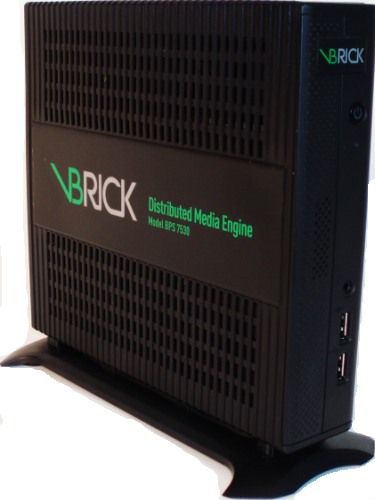Introduction
DME Overview
The VBrick H.264 Distributed Media Engine (DME) simplifies delivery of high definition video and other rich media content across multi-site enterprises and campus environments. If properly configured, you can simultaneously input multiple streams (of different types) into the DME and output them as the same stream types or as different stream types.
For example, you can input RTP and TS (transport streams) into the DME and output those same streams as RTMP (Flash) or HLS (for Apple iOS devices). The DME also provides video content caching, storage, and serving to ensure that stored content is delivered from a DME as close to the end user as possible.
The DME may be deployed at a central location, to support transmuxing, or at remote locations to support distribution. It is a single integrated platform providing media redistribution, media transformation and video-on-demand content storage.
The DME accepts multiple H.264 media streams from multiple central sites and redistributes that content to diverse endpoints including PCs/MACs, mobile phones and televisions/monitors. This one integrated platform optimizes WAN bandwidth use, simplifies endpoint support and offers local storage of centrally managed content.
The DME is offered on a choice of three robust hardware platforms, all leveraging VBrick's experience with high performance, low touch appliances. It is also offered as a software product to be installed on the customers own hardware (including VMWare).
It requires only a web browser interface for management, and the H.264 DME seamlessly integrates as a distributed element within the VBrick enterprise IP video platform. This includes working in concert with a central VBrick Enterprise Management System (VEMS) to intelligently store and serve content from a local DME.
Deploying the H.264 Distributed Media Engine assures users of access to high definition quality video on both fixed and mobile endpoints, even if they are located across campus or across the world.

